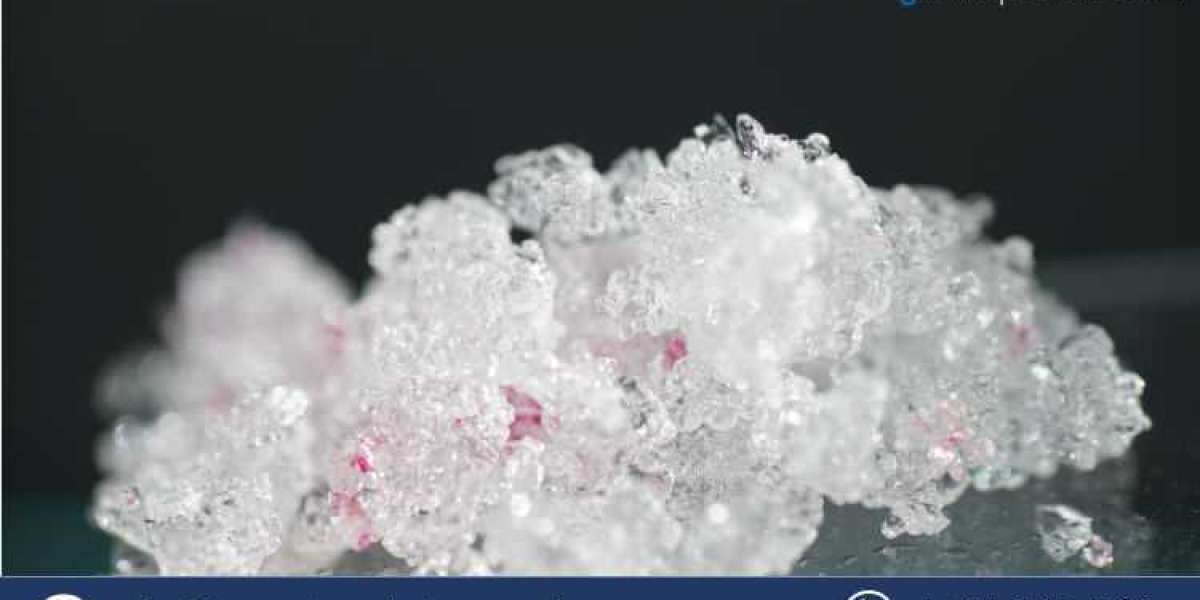The global sodium cocoyl isethionate market size is on a growth trajectory, reaching a value of approximately USD 174.60 million in 2023. This market is being driven primarily by the increasing demand for personal care products, especially those that promote gentle cleansing and moisturization. As consumers become more conscious of the ingredients in the products they use, sodium cocoyl isethionate, a mild and effective surfactant, has gained popularity in a variety of personal care formulations. In this blog, we will dive deeper into the market outlook, drivers, segmentation, challenges, and key developments in the sodium cocoyl isethionate market, with insights into regional trends and key players.
Market Outlook
The sodium cocoyl isethionate market is expected to continue its growth, with a projected compound annual growth rate (CAGR) of 4.5% during the forecast period of 2024-2032. This growth can be attributed to the increasing awareness and demand for safe, effective, and gentle personal care ingredients. With the rise of skincare and haircare products formulated for sensitive skin, sodium cocoyl isethionate has become a go-to ingredient for its mild cleansing properties and skin-friendly nature.
The market is poised to expand due to increasing consumer demand for sulfate-free and mild surfactants, which contribute to product formulations with a softer impact on the skin while maintaining their cleansing efficacy. As the beauty and personal care industry continues to prioritize clean, green, and sustainable ingredients, the role of sodium cocoyl isethionate is set to increase significantly.
Market Dynamics
Market Drivers
Increasing Demand for Personal Care Products: The growing consumer preference for high-quality, safe, and effective personal care products is driving the demand for mild surfactants like sodium cocoyl isethionate. It is commonly found in facial cleansers, shampoos, body washes, and other beauty products, owing to its ability to cleanse gently without stripping the skin's natural oils.
Rising Awareness About Sulfate-Free and Mild Surfactants: As consumers become more aware of the harmful effects of harsh chemicals like sulfates on the skin, there is a rising shift towards sulfate-free products. Sodium cocoyl isethionate is an ideal alternative because it is a mild surfactant, derived from natural coconut oil, and it is gentle on the skin while offering effective cleansing properties.
Growth in Natural and Organic Products: The rise in demand for natural, organic, and cruelty-free personal care products is a significant driver of sodium cocoyl isethionate's market growth. This ingredient fits perfectly into formulations that prioritize clean, green beauty trends.
Growing Focus on Skin Health: Consumers are increasingly opting for products that support skin health, particularly those formulated for sensitive skin. Sodium cocoyl isethionate, known for its non-irritating and non-drying nature, meets the demand for products designed for sensitive skin.
Key Market Challenges
Price Volatility of Raw Materials: Sodium cocoyl isethionate is primarily derived from coconut and palm oil, and fluctuations in the price of these raw materials can affect the production costs of the surfactant. This price volatility can hinder the market growth, especially in regions where raw material supply is affected by climate change or geopolitical factors.
Competition from Other Surfactants: While sodium cocoyl isethionate is a popular ingredient in personal care products, it faces competition from other mild surfactants such as sodium lauryl sulfoacetate and cocamidopropyl betaine, which also offer gentle cleansing properties.
Regulatory Challenges: The personal care industry faces stringent regulations on product formulations, especially with increasing scrutiny on the use of natural and organic ingredients. Manufacturers need to ensure compliance with various standards, which can increase the cost of production.
Segmentation
The global sodium cocoyl isethionate market can be segmented based on product type, application, and region:
By Product Type
- Powder Form: Sodium cocoyl isethionate is commonly available in powder form, which is used in the formulation of solid products such as shampoos, soap bars, and other solid cleansers.
- Liquid Form: The liquid form of sodium cocoyl isethionate is widely used in liquid personal care products like shampoos, body washes, and facial cleansers.
By Application
- Personal Care: This segment includes facial cleansers, body washes, shampoos, and other skincare products. Sodium cocoyl isethionate's role as a gentle, effective cleanser makes it highly preferred in these formulations.
- Cosmetics: Sodium cocoyl isethionate is also used in cosmetics products like makeup removers and facial wipes due to its ability to remove impurities and makeup without drying out the skin.
- Others: This includes applications in industrial cleaners and other non-cosmetic formulations where mild surfactants are required.
By Region
- North America: The demand for personal care products in North America, especially in the U.S. and Canada, continues to rise, driven by the increasing preference for natural and sulfate-free ingredients.
- Europe: Europe is a significant market for sodium cocoyl isethionate, with a focus on sustainable, natural, and cruelty-free beauty and skincare products.
- Asia Pacific: The growing beauty and personal care market in countries like China, India, and Japan is driving the demand for sodium cocoyl isethionate, as consumers are more conscious of the ingredients in their skincare and haircare products.
Recent Developments
- Innovative Product Formulations: Manufacturers are increasingly incorporating sodium cocoyl isethionate into various formulations, such as sulfate-free shampoos, moisturizers, and face washes, to meet the demand for mild, skin-friendly products.
- Focus on Sustainability: Many players in the market are focusing on sustainable sourcing practices, ensuring that the coconut oil used for sodium cocoyl isethionate production is responsibly sourced, with minimal environmental impact.
Key Players
- BASF SE
- Clariant International Ltd.
- Galaxy Surfactants Ltd.
- JEEN International Corporation
- Guangdong Kiyu New Material Co., Ltd
- Trulux Pty Ltd.
- Hefei TNJ Chemical Industry Co., Ltd
FAQs
What is the global market size for sodium cocoyl isethionate? The market was valued at approximately USD 174.60 million in 2023 and is expected to grow at a CAGR of 4.5% during the forecast period of 2024-2032.
What are the key drivers of market growth? Key drivers include increasing health consciousness, the demand for sulfate-free products, and advancements in hybrid seed development.
Which region leads the market? North America and Europe are leading the market due to high consumer demand for natural, sulfate-free products.
What challenges does the market face? Price volatility, competition from other surfactants, and regulatory challenges are the key hurdles faced by the market.
What are the main applications of sodium cocoyl isethionate? The ingredient is used in personal care products, cosmetics, and industrial cleaners.
Who are the key players in the market? Key players include BASF SE, Clariant International Ltd., and Galaxy Surfactants Ltd.














